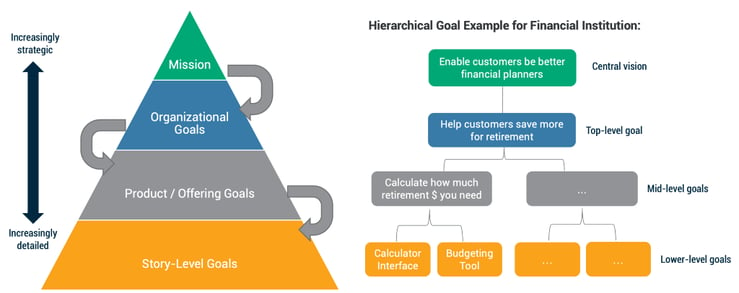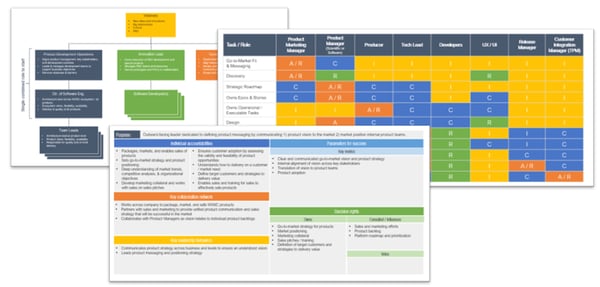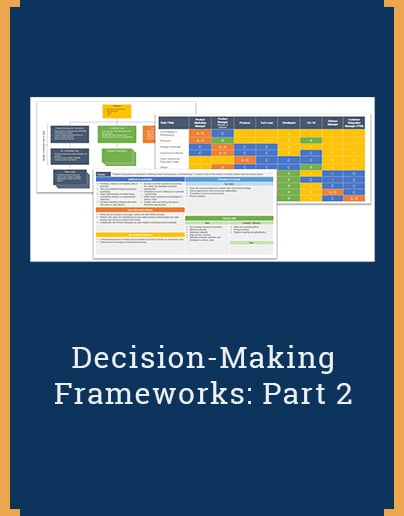In part 1 of this series, we simplified decision-making by identifying ways to focus on only the most meaningful decisions. While decision-making models can have a major impact on helping leaders and organizations thrive in a digital world, more factors are at play in real-word scenarios.
“Align and empower our teams to surprise and delight customers with seamless experiences.” Give or take a word or two, this is one of the most common goals we hear from leadership teams. Who wouldn’t want empowered teams? Who wouldn’t want delighted customers and seamless experiences? Yet very few organizations can actually pull it off.
Stakeholder alignment and empowering teams are often cited by our clients as their biggest blockers to meaningful velocity. Part 2 of this series addresses how these challenges relate back to decision-making by outlining some key foundational structures that align business units and empower teams to do their best work.
To achieve stakeholder alignment and empowered teams, two foundational elements are critical:
- A shared and transferrable vision
- Clear ownership and accountability
Shared and Transferrable Vision
“If you could get all the people in an organization rowing in the same direction, you could dominate any industry, in any market, against any competition, at any time.”
– Patrick Lencioni, The Five Dysfunctions of a Team

Wanting to have a clear vision is difficult to argue with, but the word “transferrable” often confuses people the first time they hear it. By transferrable, we simply mean that the vision can be communicated throughout the organization—regardless of the seniority or role of the individual, the vision has meaning that can be tied back to day-to-day responsibilities and mid-term company goals. Research shows how severely and routinely organizations underestimate how big of a challenge this is.
“Only 28% of executives and middle managers responsible for executing strategy can list three of their company’s strategic priorities.”
- MIT Sloan Management Review, 2018
It’s common for the leadership of an organization to meet at an executive offsite, align on goals for the next quarter, and then fail to communicate those goals to the larger organization. Empowering employees means giving them access to all the information and tools to make the “right” decisions. This requires both team and individual objectives to connect with hierarchical goals and measurable results. Day-to-day decisions and priorities need to align and support organizational goals. Seems obvious, but take a second to think about your current objectives and if they can cleanly map to the vision for your organization. It’s easy to see a gap and say, “we need to fill this.” But if that gap isn’t between you and your organization’s goals, your likely wasting effort that is better spent elsewhere.

Without a clear, transferrable vision, teams will struggle to juggle competing priorities and likely to fail to create dependable product roadmaps. Tactical challenges like ineffective prioritization and siloed backlogs start with teams not having clear guidance and have far-reaching impacts on the business’s ability to differentiate, innovate, and meet evolving customer needs.
Clear ownership and accountability
Organizations have pockets of unnecessary complexity that cause churn, confusion, and conflicting priorities. These complexities are generally manageable once explicitly identified. One of the most common culprits is unclear or dual ownership of decision-making rights.
Teams that lack accountability or struggle to collaborate effectively routinely fail because they aren’t setup for success with a clear decision maker. This slows the pace of the business and contributes to organizational friction.
Responsibility alignment tools such as RACI, accountability charts, or detailed role charters can be an effective means to optimize teams for results and accountability, but it’s important to remember that issues with accountability and ownership exists at all levels and types of teams. While the approach may be slightly different for how engineering teams make decisions, the bottom line is decisions need a single owner, and that owner needs to be clear to the entire organization.

For years, Apple has implemented the concept of a “DRI” or “directly responsible individual” for all projects. The DRI is listed on every meeting agenda. There is zero confusion who to go to for decisions or where the buck stops.
One often overlooked component to successfully rolling out any organizational decision-making framework is recognizing that it can represent a significant cultural shift. This means planning for change management and adoption (a whole series in itself—look for future posts on this topic).
While organizational alignment is crucial, there are certainly times where teams won’t agree on the path forward.
“Great teams avoid the consensus trap by embracing a concept that Intel, the legendary microchip manufacturer, calls “disagree and commit.”
- Patrick Lencioni, The Advantage
Part 3 of this series will focus on the increasing importance of making data-driven decisions to both drive alignment and business growth.
